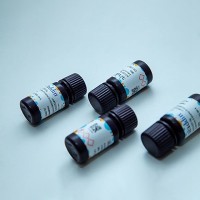Using an Inverse PCR Strategy to Clone Large, Contiguous Genomic DNA Fragments
互联网
434
Conventional PCR screens of genomic DNA will often yield a substantial fragment of the gene of interest. However, identification of flanking sequences on either side of a known sequence can be problematic with conventional PCR. in which primers extend a complementary chain in a 5′ → 3′ direction. However, if the template DNA is circularized and then used with primers that are oriented with their 3′ ends directed away from each other, amplification around the circular template results in a linear PCR product consisting of uncharacterized DNA fragments flanked by the known DNA sequences (Fig. 1 ). This variation of the conventional PCR strategy is known as inverse PCR ( 1 , 2 ). and we have used the technique to amplify myosin sequences in Tetrahymena ( 3 ). In this chapter we describe protocols that enable the investigator to apply the inverse PCR technique to clone contiguous sequences upstream and downstream of a known DNA sequence.
Fig. 1. General scheme for cloning contiguous sequences.









